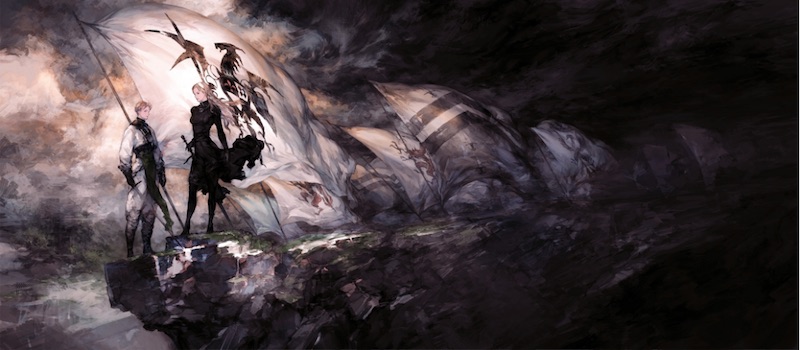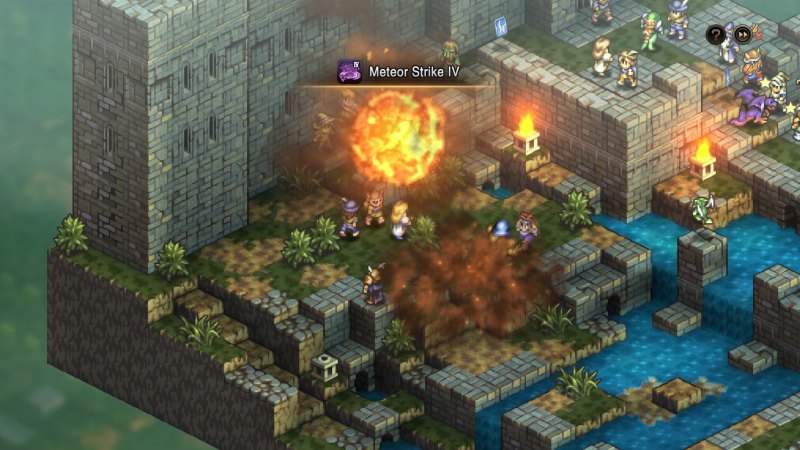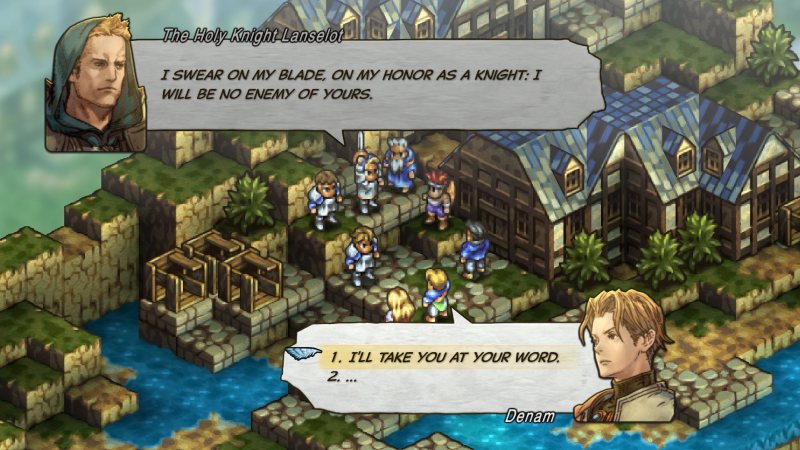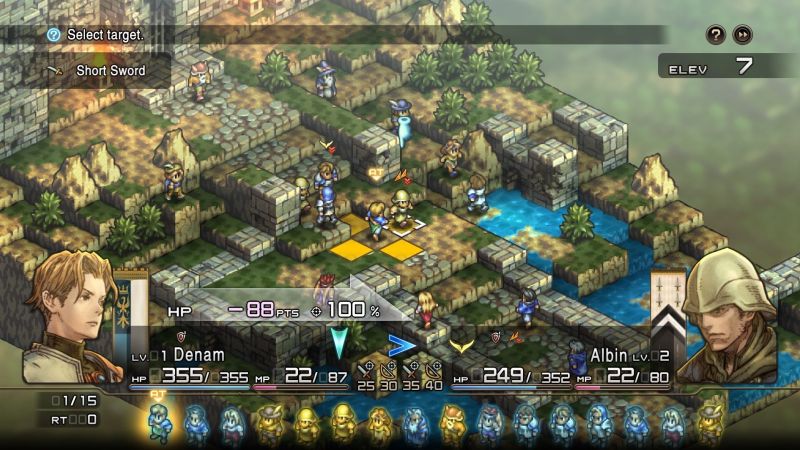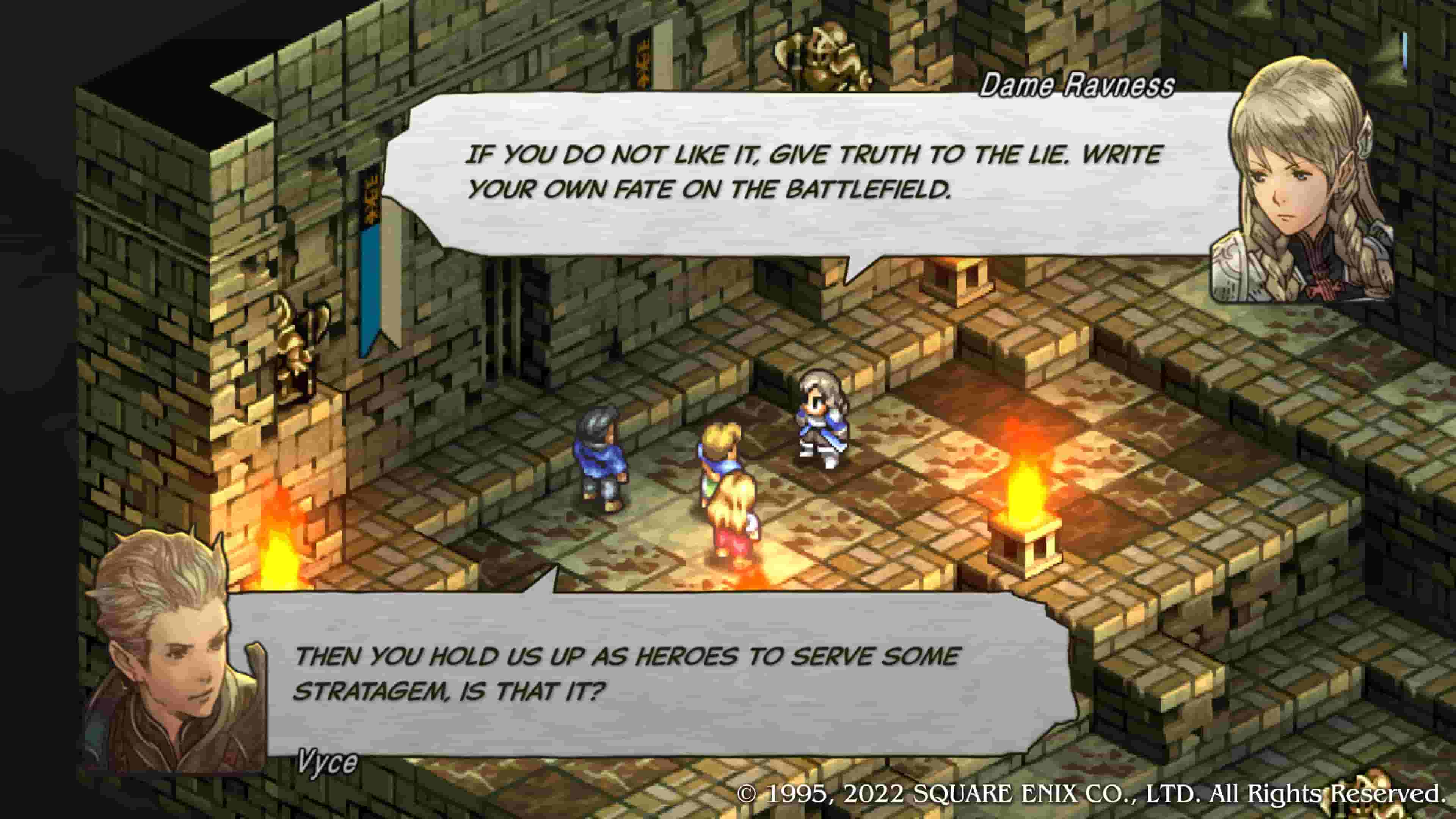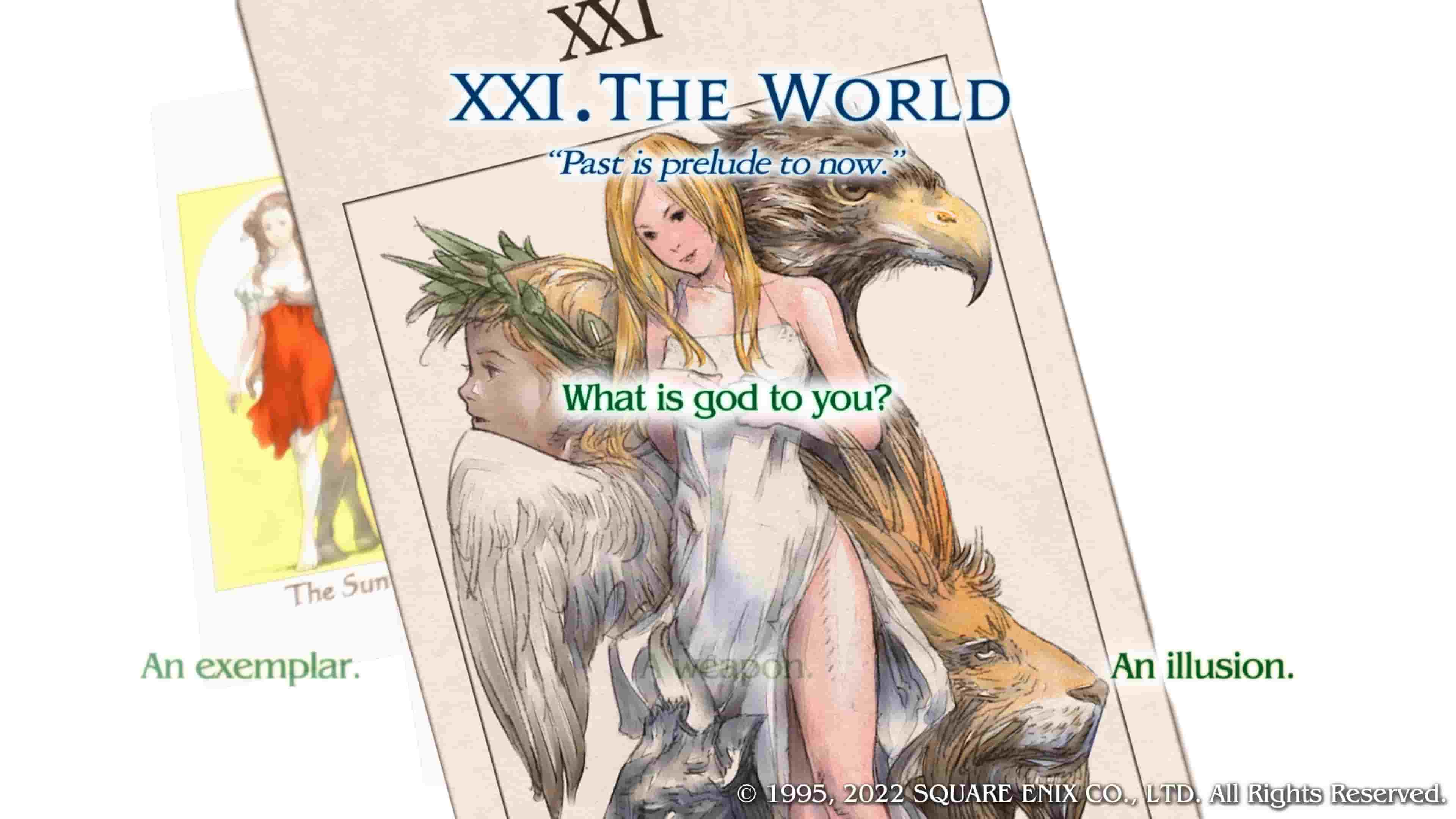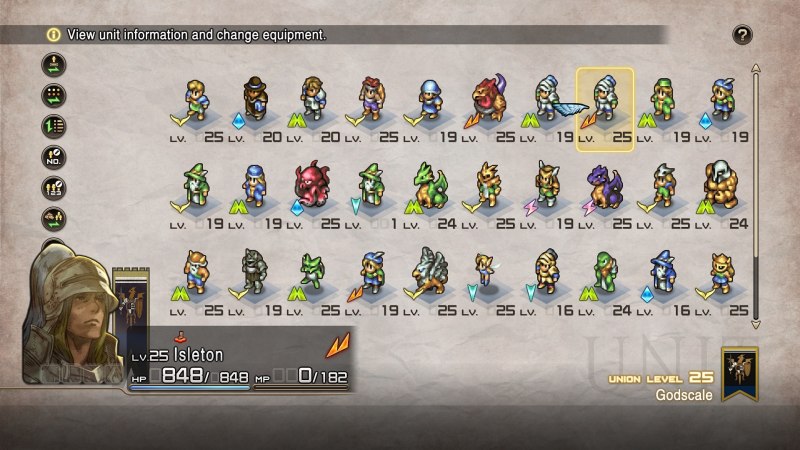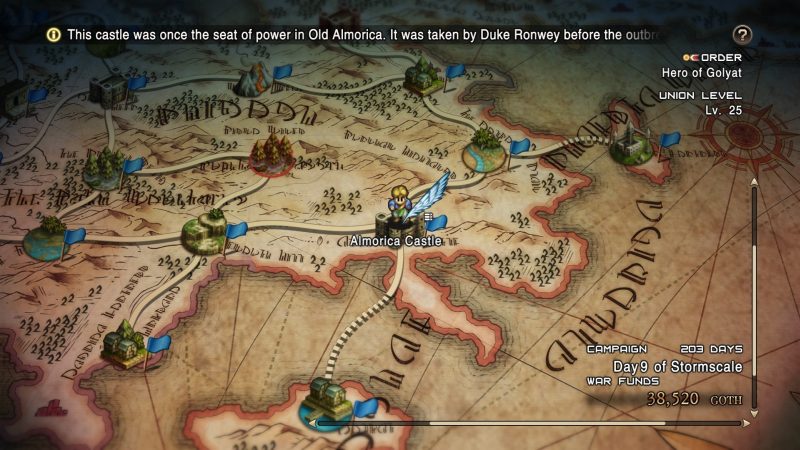Tactics Ogre Reborn PS5 Review – I recite this mantra time and time again: A good game is good no matter the genre. Several titles caught me off guard simply because I enjoyed them despite my dislike for the particular genre they are associated with.
One genre that I almost religiously avoid is the tactical RPG. The time it takes to progress through the game as well as the micromanagement of combat always keep me from enjoying myself.
Several classics of the genre nag at me to play them, one of which being Tactics Ogre. Thankfully, the time has come for me to play it in the recent form of Tactics Ogre: Reborn for PS5.
While I still feel the normal frustrations I feel in tactics RPGs, Tactics Ogre does several things to keep me coming back for more.
Tactics Ogre Reborn PS5 Review – Enjoyable Classic Tactics Game, Even For Non-Tactics Fans
The opening of Tactics Ogre takes place in a small town basement in the kingdom of Valeria. There, siblings Denam and Kaciua Powell convene with childhood friend, Vyce Bozek, grasping at straws for a way to regain their freedom after the Bacrum Faction seized control of Valeria.
Their first push toward freedom sees Vyce convince Denam and Kaciua to attack an incoming group of mercenaries, believing the group includes a significant figure in the political conflict.
However, there they find allies in Lanselot Hamilton and his band. Together, they begin their push against the Bucrum hold on Valencia as well as the incoming influences from the neighbouring factions.
Thoughtful Presentation, If A Bit Dated
The smartest thing Tactics Ogre does is keep the story moving forward in the present. Instead of force feeding waves of subtext at the beginning of the game by describing prior events, the opening pushes Denim and company forward like you had been there the entire time.
You learn as you go, both past and present. The narrative fills your experience with smart dialogue writing, strong voice actors, and weighty scenarios. Even during battles, little tidbits and quips between both characters and enemies alike build into the core experience.
Tactics Ogre’s story does everything it can to respect your time by delivering quality narrative progression at every turn. One thing to keep in mind is this is definitely a power struggle, military-style game. There’s plenty of character development as you go, which plays into the entire package.
However, the political aspects of the narrative almost force most of the individual stories to simply pass by at the end with brief interludes. Instead of strong reveals or oomph moments at the end of the game, the final results kind of pass by one after another in a sort of hasty epilogue. To its credit, the end of the game does cover a lot of ground, but the cost is being shown the results rather than experiencing them.
For much of the game, I constantly stare at the on-field sprites simply because they barely represent the thumbnails in the menu screen. They get the job done, with the more story-relevant characters having more defined details than the generic combatants. Many of standard units tend to look too similar to each other, especially when bunched into a group.
Several times, I accidentally attacked an ally when I thought I had targeted an enemy. Thankfully, a press of L2 allows you to move back several turns and redo actions made, via a feature called the Chariot System. This helped me clean up any dumb mistakes I made due to inexperience with the genre and, from what I understand, is a carryover feature from the original game.
Speeding Up The Micromanagement
The only true change made to the gameplay formula is a fast-forward option to speed up combat flow. This allows you to spend more of your time moving your character pieces around the board instead of watching slow-moving sprites.
The standard affair for tactics games is here: Move characters, choose actions, and defeat enemies. What works so well in Tactics Ogre, however, is how simplified it presents all of these functions without limiting their use.
What I really mean is there aren’t any convoluted menus to muddy up the playing field. Instead, characters have only a set of moves available to them at one time, and they all sit in linear submenus that appear underneath the character. This keeps your eyes on the battlefield instead of making you look up at menus at the top of the screen.
Then, the game randomly generates different kinds of cards on the field that can be picked up to gain specific effects. Blue cards gain benefits, green cards strengthen held blue cards, and red cards wipe out held cards.
Strong attacks knock enemies back. With the proper placement of a strong attack, you can knock an enemy into a red card, wiping out any benefits they picked up. This specific scenario is very hard to come by, but it’s one of so many that you can find yourself in with combat in Tactics Ogre.
Prepare For Battle
More than half of your success comes before any battle even starts. Everything outside of combat resides in menu screens, where you manage, equip, and recruit your teams. This is where the age of the game truly shows itself. Comparing equipped and buyable gear when in the shop is a bit of a guessing game.
Swapping menu screens allows you to look at stats for that piece of gear and who can equip that gear. You can also see how many of that specific gear you own, but it doesn’t show you who has that gear equipped.
In general, most gear you get comes from combat and you receive several copies of that gear. This gear frequency ultimately leaves you capable of equipping your new and existing party members whenever you need to.
Furthermore, any special gear you buy from a store will show that you don’t own any of that gear anyway. Thankfully, the way the game dishes out items left and right helps to alleviate the limitations that comes with in-store comparisons
The Grind Is Real
Tactics Ogre shows its age in one area in particular: game progression. In order to progress the story, you need to take on training modes in each place you conquer. In doing so, you gain more experience and level up your units.
Granted, you can try and struggle your way through Tactics Ogre by just doing the fights built into the story, but you will lose many of your units permanently. Since the three separate endings depend on how many party members fall in combat, you have a lot to risk just to rush through the game.
Just to feel comfortable, jumping into an extra training round at every town on the story map pays off in spades. This will add into the time it takes to complete the game. The training battles spread out the story beats more and more as well. For people like me who don’t generally enjoy tactics games, this can be a make-or-break side of the experience.
Tactics Ogre Succeeds Where Most Tactics Games Slip
All in all, Tactics Ogre: Reborn proves why it received its classic status: It showcases a streamlined tactics experience combined with fantastic writing and simplified mechanics. Having said that, it still shows its age in several key areas, like with overall aesthetic, level grinding, and equipment management.
Regardless, there’s something here that every player should experience, whether you like tactics games or not— and I don’t say that lightly, either. It can make a tactics non-believer question their gaming preferences.
Review code kindly provided by publisher.
Tactics Ogre: Reborn releases on PS4, PS5, Nintendo Switch, and PC on November 12, 2022.
